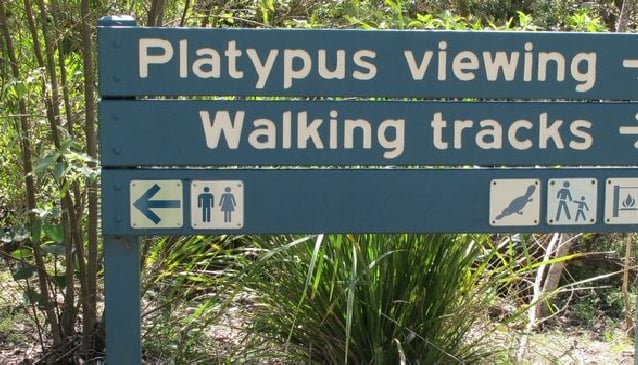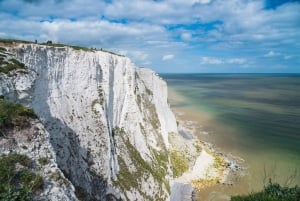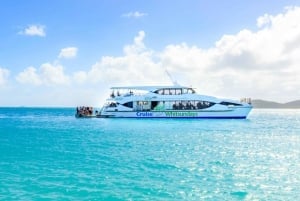Watching Platypus at Eungella
A male platypus has spurs on its hind legs...one quick blow can be fatal to animals like dogs...
Book Top Experiences and Tours in Whitsundays:
If youʻre booking your trip to Whitsundays last minute, we have you covered. Below are some of the top tours and experiences!- Melbourne: City Helicopter Tour with up to 5 Passengers
- From London: Canterbury & White Cliffs of Dover Tour
- Cardiff Day Tour from London with Local Guide (Visit Wales)
- Airlie Beach: Glass-Bottom Boat Tour
- Airlie Beach: Whitehaven Full-Day Eco-Cruise with Buffet
Watch a great video of a platypus below this article!
We were lucky enough to catch a glimpse of a platypus on a recent day trip to Eungella National Park, located 80 km west of MacKay. The park is one of the few places down under where you can view these shy creatures in their natural habitat, and one of the best things to do in the region. So, I was naturally elated to see a platypus at play. I was actually taking a video of an eel, when the platypus suddenly came into view swimming right above the eel! Here is some interesting information about this gentle mammal.
An Egg Laying Mammal
The platypus is a monotreme, i.e. a mammal that lays eggs. It is a semi-aquatic creature that is found only in Tasmania’s cold highlands, coastal Queensland’s tropical forests and the Australian Alps. A platypus’s body is 30cm-45cm long, its tail is 10cm-15cm long, and it weighs anywhere between 0.7kg -2.4 kg. An interesting fact is that the teeth of the platypus fall out at an early age and its grinds and chews food using horny plates in its mouth.
The platypus is a carnivorous mammal that feeds on shrimps, insect larvae, crayfish and ringed worms. A night-time hunter, it builds burrows on land near lakes and streams, amongst overhung vegetation to prevent detection by predators. It sleeps for about fifteen hours a day!
















The Unique Looks of the Platypus Baffled Naturalists
When European naturalists first encountered a platypus back in the 18th century, they believed that it was impossible that a creature with the bill of a duck, tail of beaver and foot of an otter could exist. In fact they verified if this was a hoax where a duck’s beak had been sewn onto a beaver-like mammal’s body! When they realized that a creature with such a unique appearance was in fact one of god’s creations, they immediately proceeded to call it a ‘platypus’, which means ‘flat-footed’ in Greek. The pre-fix ‘duck-billed’ is often added with ‘platypus’, but this is a redundant term as there exists just one platypus species.
Graceful Swimmers, a Little Awkward on Land
You can say that the body of a platypus was designed for swimming. It paddles with its webbed feet and steers with its tail and hind feet. Its swimming motion under water is smooth and graceful. The folds of its skin cover its ears and eyes, and its nostrils seal up when it swims. But it does not exactly have the grace of a ballerina on land! Its movements are more awkward but it sure can run quite comfortably on land.
Beware of the Poisonous Spurs
A male platypus has spurs on its hind legs that secrete a venomous cocktail of proteins produced in its immune system. One quick blow can be fatal to small animals like dogs, and incapacitate humans. Case histories reveal that while the venom does not kill humans, the wound causes excruciating pain, can spread gradually across the affected area and give rise to a condition known as hyperalgesia, which is characterized by a heightened sensation of pain for many weeks or months. The production of this venom peaks during breeding season and is considered to be a weapon that that the male uses to affirm its dominance.












The good news is that conservation efforts by the Australian government have ensured that the platypus does not find itself on the list of endangered species. Platypuses have also been bred successfully in zoos and sanctuaries across the country – so hopefully, they will be with us for a long time to come yet…












